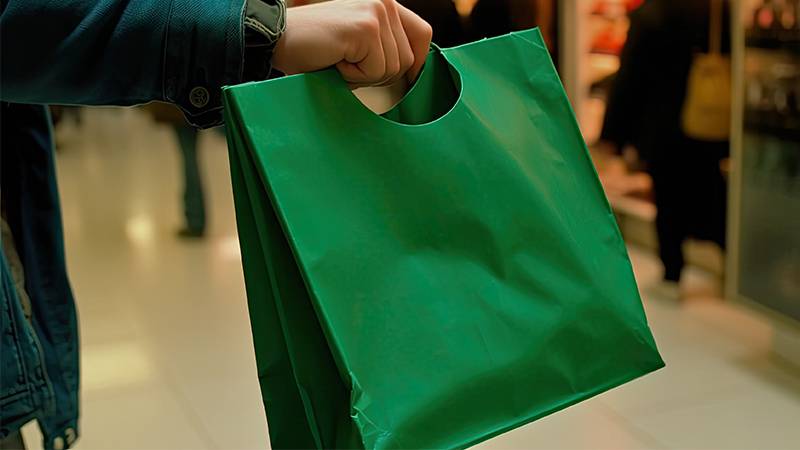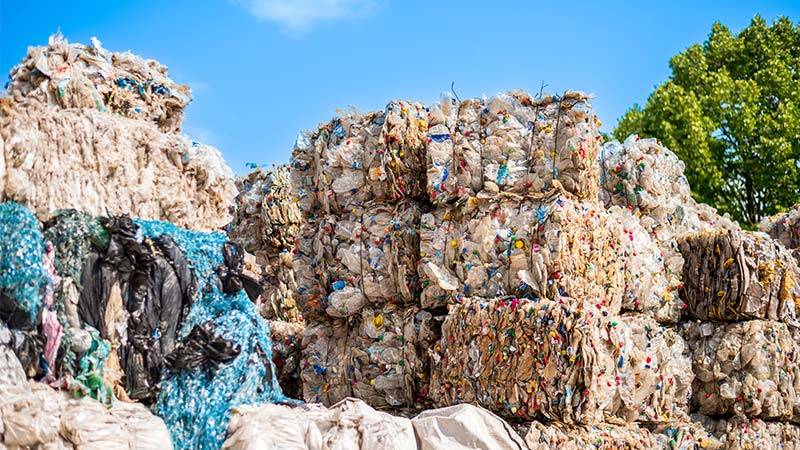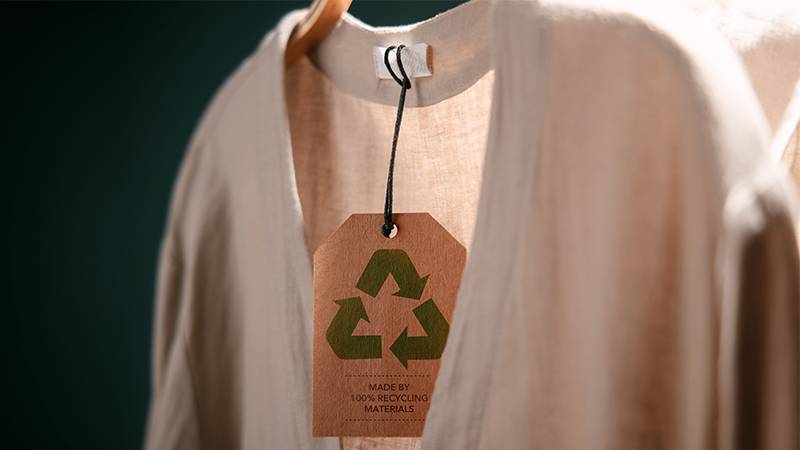Each year, as Black Friday approaches, consumers worldwide gear up for unparalleled deals and shopping extravaganzas. Yet, beneath the allure of slashed prices lies a hefty environmental cost: excessive waste, increased carbon emissions, and rampant overconsumption.
In all my years of observing retail trends, I’ve seen a compelling alternative emerge—Green Friday. It’s not just another shopping day but a response to the environmental strains of Black Friday.
Offering a more conscious approach to consumerism, Green Friday beckons as a promising horizon, advocating for a balance between desire and sustainability.
What is Green Friday?
Green Friday, at its core, is an anti-Black Friday movement. Initiated around 2015, its essence is to resist the tidal wave of mass consumerism that peaks during Black Friday.
However, the seeds of such a concept were sown much earlier, with the inception of “Buy Nothing Day” in Canada in 1992. This day was a bold statement against unchecked buying habits and the strain they put on our planet. The birth of Green Friday was fueled by growing concerns about overconsumption, waste reduction, and a desire to promote sustainable shopping practices.
The movement’s primary goal is to shift our shopping mindset from quantity to quality and from short-term gains to long-term environmental benefits. Green Friday encourages us to pause, reflect, and choose ethical purchases, emphasizing the conscious consumerism that respects both our planet and its inhabitants.

When is Green Friday in 2023?
In 2023, Green Friday will fall on November 24th. It’s always observed the day after Thanksgiving, aligning closely with Black Friday. This strategic placement emphasizes the movement’s goal of promoting sustainable shopping and offering a more conscious alternative to the traditional post-Thanksgiving shopping frenzy.
Why is Green Friday Important?
In the face of a looming global environmental crisis, our shopping habits are more than just personal choices; they’re a reflection of our collective values. Green Friday stands as a beacon amidst this backdrop, emphasizing the profound impact of collective sustainable decisions on our planet. By opting for sustainable shopping, we wield the power to significantly mitigate environmental degradation.
Moreover, Green Friday serves as a potent reminder, raising awareness about the dangers of unchecked overconsumption. As we move forward, it’s crucial to recognize that every purchase we make, or refrain from making, has ripple effects on the world around us.
The Impact of Black Friday on the Planet
The buzz around Black Friday, while exciting for many, brings with it a considerable environmental cost. Research shows that deliveries from Black Friday sales release over 400,000 metric tons of greenhouse gas emissions into the atmosphere.
Beyond emissions, there’s the issue of waste. Mountains of packaging materials, often non-biodegradable, end up in landfills post-event. Moreover, the allure of massive discounts often leads to impulse purchases, which soon become discarded products, further exacerbating waste concerns.
Additionally, there’s the energy angle. As online shopping trends continue to grow, server farms work overtime to handle the Black Friday traffic, consuming vast amounts of energy.
Simultaneously, physical stores, hoping to entice customers, often extend their operating hours and enhance in-store lighting and displays. This heightened activity translates to increased energy consumption, further intensifying the event’s carbon footprint.
In essence, while Black Friday might be a boon for the retail industry, it poses significant challenges to our quest for sustainability and a healthier planet.

Green Friday vs. Black Friday
The juxtaposition of Green Friday and Black Friday paints a vivid picture of two ends of the consumer spectrum. From an environmental standpoint, while Black Friday contributes significantly to carbon emissions, waste generation, and increased energy consumption, Green Friday advocates for minimal environmental impact. It emphasizes buying fewer, longer-lasting items and supports brands that prioritize sustainability.
From a behavioral lens, Black Friday spurs impulse purchases, driven by enticing deals. Green Friday, conversely, promotes reflective buying, where consumers consider the longevity and environmental footprint of their purchases.
I myself have noticed a palpable shift: while earlier the masses flocked unquestioningly to Black Friday deals, today, a substantial segment is gravitating towards the conscious consumerism ethos of Green Friday.
In market trends, many brands are now championing Green Friday initiatives, recognizing the increasing demand for ethical purchases and sustainable shopping experiences. In contrast, while Black Friday still enjoys massive commercial success, its unchecked growth might be plateauing, given rising environmental concerns.
How to Make Your Black Friday More Green
Transforming Black Friday into a more eco-friendly shopping experience might seem challenging amidst the deluge of tempting deals. However, it’s completely feasible with a few conscious choices. Here are 7 steps to ensure your Black Friday aligns with sustainable shopping principles:
1. Research Brands First
Before adding to cart, delve a little deeper into the brand’s ethos. Understand their sustainability efforts, source materials, and production practices. Websites like Ethical Consumer offer extensive insights into a brand’s environmental and ethical commitments.

2. Choose Quality Over Quantity
The longevity of a product often defines its sustainability. Instead of chasing fleeting trends, focus on timeless, high-quality items. A product that lasts longer not only serves you well but also minimizes the frequency of replacements, thus reducing overall consumption and waste.
3. Harness the Power of Apps
In our digital age, apps play a crucial role in guiding sustainable decisions. Platforms like Good On You or DoneGood curate brands based on their commitment to ethical practices and sustainability, providing transparent reviews and ratings.
4. Support Local
Embracing local artisans and businesses isn’t just about community support. These often smaller-scale operations produce goods with a reduced carbon footprint when compared to massive multinational corporations. Besides, purchasing local products reduces transportation emissions.
5. Opt for Eco-friendly Packaging
The aftermath of Black Friday often involves heaps of non-recyclable packaging. Make a deliberate choice to support brands that offer minimal, recycled, or biodegradable packaging. This ensures that your shopping spree doesn’t contribute extensively to landfills.

6. Explore Second-Hand Markets

7. Limit Online Returns
The convenience of online shopping is undeniable, but it comes with an environmental cost, especially when it involves frequent returns. Aim for precision in your purchases to reduce the carbon emissions associated with returns.
Getting Involved on Green Friday
Green Friday isn’t just a shopping trend; it’s a movement, a call to prioritize our planet over unchecked consumerism. Whether you’re a seasoned advocate or just discovering the merits of sustainable shopping, there are multiple ways to champion this cause.
Here’s how you can participate and make a more substantial impact this Green Friday:
1. Social Media Advocacy
In today’s digital age, social media is a powerful tool for raising awareness. Use platforms like Instagram, Twitter, or Facebook to share the ethos behind Green Friday. Share posts, infographics, or personal stories highlighting the importance of conscious consumerism. Use trending hashtags like #GreenFriday and #SustainableShopping to expand your reach.

2. Organize Local Awareness Events
Engage your community by organizing events or workshops that emphasize the environmental impact of Black Friday and the benefits of going green. Collaborate with local eco-friendly brands, artisans, or speakers who can shed light on sustainable alternatives.
3. Educate and Share
Knowledge is power. Arm yourself with facts, statistics, and compelling stories about the environmental crisis. Offer talks at schools, community centers, or local gatherings, emphasizing the importance of ethical purchases and waste reduction.

4. Support Green Brands
Lead by example. Opt for brands that adhere to Green Friday’s principles. Whether it’s choosing sustainable products or promoting eco-friendly brands on your channels, your actions can inspire others.
5. Collaborate for Change
Join forces with influencers, bloggers, or local leaders who resonate with Green Friday’s principles. Joint campaigns, webinars, or even collaborative content can amplify the message and reach a broader audience.
Brands and Green Friday
Brands today wield substantial influence over consumer behaviors, and their role in the Green Friday movement is both critical and transformative. As society becomes more environmentally-conscious, brands that prioritize sustainable shopping practices are experiencing heightened consumer loyalty and brand trust.
To authentically participate in Green Friday, brands should:
1. Be Transparent
Disclose sourcing and manufacturing practices. Consumers value honesty and are more likely to support brands that provide clear insight into their sustainability efforts.
2. Offer Durable Products
Move away from the disposable culture. Design products that are durable, functional, and timeless, reducing the need for frequent replacements.
3. Promote Responsible Consumption
Instead of pushing consumers to buy more, encourage them to buy better. Highlight the longevity and versatility of products.
4. Engage in Green Initiatives
Partner with environmental organizations, adopt eco-friendly packaging, or introduce recycling programs.
5. Share Success Stories
Brands that have previously benefitted from Green Friday campaigns can serve as inspiration for others.
Conclusion
As the world grapples with environmental challenges, the onus falls upon each one of us to make responsible choices. Sustainable shopping isn’t just a fleeting trend; it’s a necessity for our planet’s well-being.
Green Friday serves as a powerful reminder of this, challenging the status quo of unchecked consumerism that Black Friday often represents. As we move forward, it’s crucial for us to pause, reflect, and choose quality over quantity.
Let’s commit to supporting eco-friendly brands, advocating for positive change, and making decisions that prioritize our planet’s future. Together, our collective actions can pave the way for a sustainable tomorrow.

